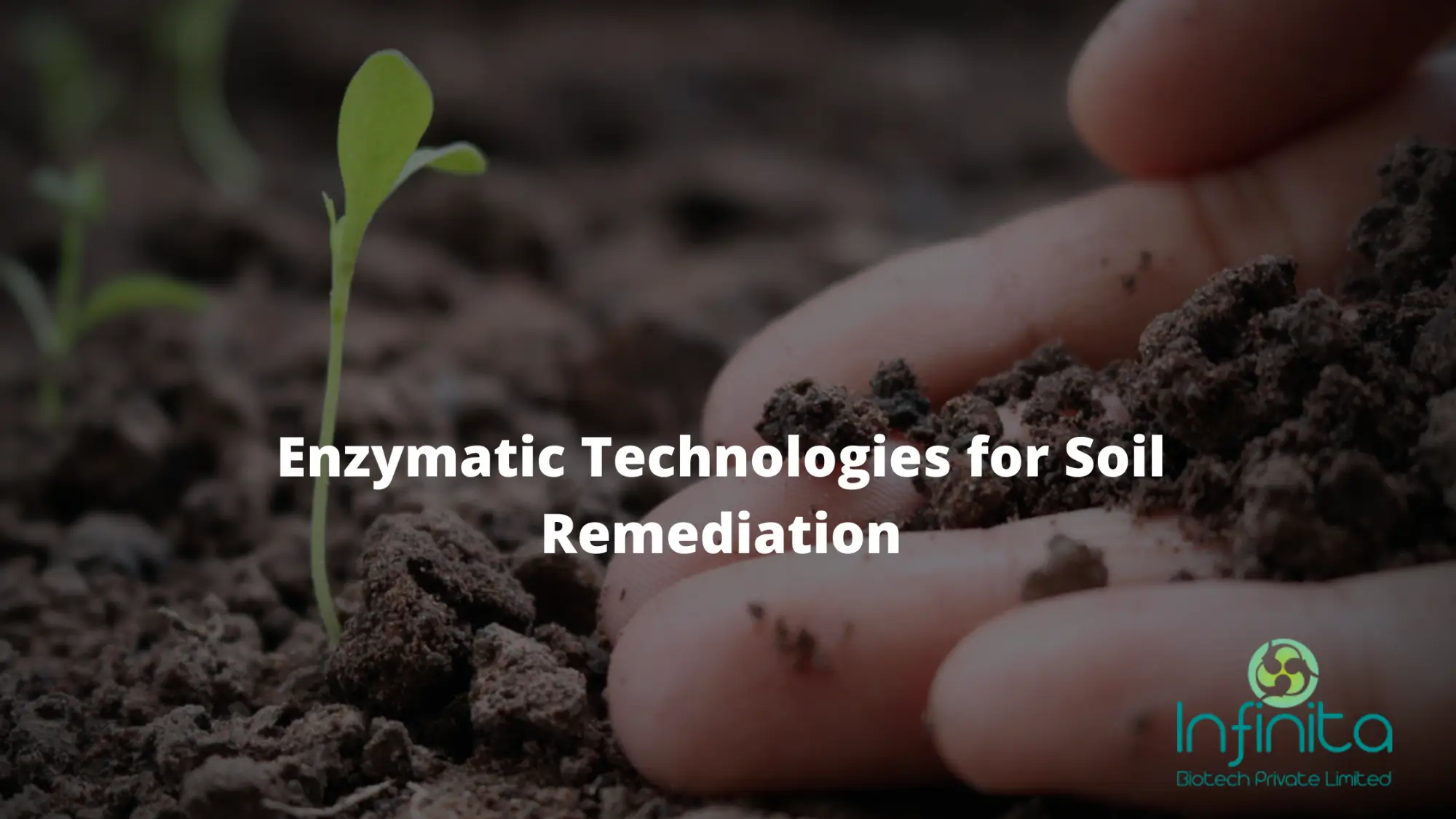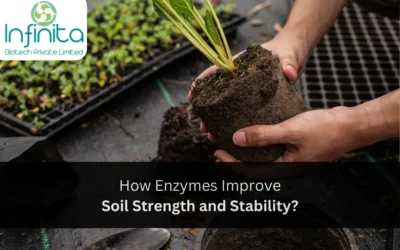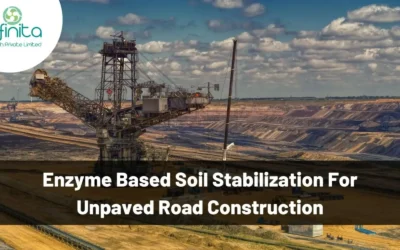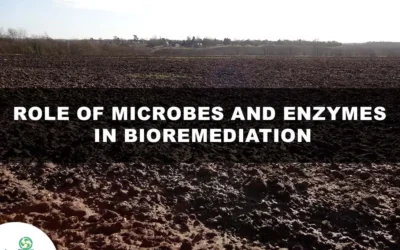Different chemical and physical methods to remove pollutants from the soil are used traditionally. These include using oxidizing agents, adsorbents and electrochemical treatments. However, these methods are not able to lower the contaminants to the regulation limits. These methods suffer from disadvantages like high cost, non-specificity, and the breakdown of these pollutants can also produce secondary contaminants. Bioremediation is the method of reducing pollution using biological agents with higher efficiency and biocompatibility. Enzymes play a key role in bioremediation. Soil remediation is the process that removes or reduces the pollutants from the soil using a combination of microbes and enzymes. Enzymes neutralize several organic and inorganic pollutants in soil that include PAHs, polymers, azo dyes, organo-cyanides, chromium, lead, and mercury. Different enzymes with specific physicochemical characteristics work on particular substrates or pollutants and break them down.
Types of Soil Remediation
Soil Remediation uses techniques to minimize pollutants in the soil through cost-effective products. These are done either through intracellular accumulation or enzymatic transformation. Enzymes are the most effective soil remediation tools. Their broad specificity and ability to engineer them for enhanced stability and efficacy on even more pollutants and special conditions is what makes them best suited for soil remediation.
Enzymes could either be added separately to the soil or by introducing microbes that produce the enzymes. These microbes include bacteria and fungi. But the latter process requires continual inoculation, aeration, and nutrition and preparing the optimum environmental conditions for microbes to propagate. The first process of using enzymes individually has several advantages over the latter. These include targeting the contaminants responsible for soil pollution, safer and better handling and storage, standardized activity, effectiveness on highly polluted soils, and permanent soil improvement. Extracellular enzymes and cofactor-independent enzymes are particularly used for this purpose. We propose harvesting benefits from both methods, hence at Infinita Biotech, our products are a mixture of selected microbes and enzymes.
Soil Remediation Techniques
Soil remediation can be performed by adding enzymes at the site itself (in situ) or by excavating, transporting, and treating the soil in different bioreactors prepared for best enzymatic activity (ex-situ). The in-situ process causes the least amount of environmental disturbance and is less expensive as no excavation and transport are required. Ex-situ methods are effective in the case of highly contaminated soils or where quick remedial action is required.
Different enzymes sourced from fungi, bacteria, algae, and plants are used for soil remediation. The enzymes are typically mono or dioxygenases, hydrolases, phosphodiesterases, peroxidases, transferases, and oxidoreductases. Let us look at the most essential enzymes used in soil remediation and their source microbes.
Soil Enzymes
Enzymes for soil remediation work on organic as well as inorganic contaminants or substrates. Let us look into these enzymes separately.
A. Soil Remediation Using Enzymes for Organic Substrates
Organic pollutants in soil include herbicides, pesticides, drugs, and dyes. Pollutants include polycyclic aromatic hydrocarbons (PAHs), aromatic molecules, steroids, chlorinated hydrocarbons, and organo-cyanides. The below-mentioned enzymes neutralize them.
1. Hydrolases
Hydrolase enzymes used in bioremediation include Esterases, nitrilases, aminohydrolases, lipase, cutinase, and organophosphorus hydrolase.
a. Esterases
Esterases catalyze organophosphorus herbicides and pesticides, polyurethanes, diethyl glycol adipate, and aromatic and aliphatic polyesters. Some esterases found in E. coli function easily in cold environments and work on phthalate esters.
b. Nitrilases
Nitrilases hydrolyze the nitrile group of herbicides, polymers, and plastics to carboxylic acid and ammonia. Cyanide dihydratase is another type of nitrilase that degrade cyanide into formate and ammonia.
c. Organophosphorus Hydrolase
Organophosphate compounds are neurotoxic and used as pesticides were used as chemical weapons too. Organophosphorus hydrolase is highly effective on these toxic compounds and has the fastest catalytic rate.
2. Ligninolytic Peroxidases
Ligninolytic enzymes are used widely in soil remediation techniques. These enzymes degrade a wide range of pollutants due to their high non-specificity and high non-stereoselectivity. These are sourced from white-rot fungi (WRF). Ligninolytic enzymes used in soil remediation can be classified into four main types – laccase (LAC), lignin peroxidase (LiP), manganese peroxidase (MnP), and versatile peroxidase (VP).
a. Laccase
The chemical name of laccase is Oxygen oxidoreductase. This enzyme is used to oxidize phenolic compounds, PAHs, dyes, and pesticides found in soil. Laccases break down PAHs to a less toxic quinine form and Carbon dioxide.
b. Lignin Peroxidase
Lignin peroxidases (LiPs) are heme-containing monomeric enzymes. LiPs have a high redox potential. They are used in soil remediation technologies to degrade phenolic and nonphenolic pollutants present in the soil.
c. Manganese Peroxidase
Manganese peroxidases (MnPs) are heme-containing glycol enzymes. MnPs work on pollutants like PAHs, azo dyes, nitroaromatic compounds, and bisphenol A and alkylphenols that disrupt endocrine activity in humans.
d. Versatile Peroxidase
Versatile peroxidase (VP) is a heme-containing ligninolytic enzyme. VP can oxidize several pollutants that include polycyclic aromatic hydrocarbons, azo dyes, both low and high redox potential compounds, high molecular weight aromatics, and both phenolic and nonphenolic pollutants.
3. Horseradish Peroxidase
Horseradish peroxidase (HRP) as the name suggests is an enzyme extracted from horseradish root. This is used in soil remediation techniques to remove pollutants like phenols, substrate phenols, and alkylphenols, azo dyes, aromatic amines, and several other pollutants.
B. Soil Remediation Using Enzymes for Inorganic Substrates
Inorganic substrates include metallic pollutants. Let us look at some enzymes that remove metallic pollutants from the soil.
1. Arsenate reductase and Arsenite oxidase
As3+ and As5+ are inorganic forms of Arsenic. These are toxic and cause a variety of medical issues like carcinoma, gangrene, hemolysis, keratosis, and neurological and cardiovascular diseases. Arsenate reductase and Arsenite oxidase degrade these forms of Arsenic through redox reactions for soil remediation.
2. Urease Enzymes
Lead contamination leads to anaemia, dyspepsia, and several gastrointestinal, neurological, and reproductive disorders. Organo-leads like tetraethyl and tetramethyl lead are absorbed in the soil, air, and water through the use of gasoline fuels. Urease enzymes degrade these toxic forms of lead to form a different carbonate crystalline Pb2+.
3. Mercuric Reductase & Organomercurial Lyase
Mercury toxicity causes different types of medical issues including allergies, neurotoxicity, nephrotoxicity, and inability to speak. It pollutes soil and water through activities like gold mining, paper manufacturing, and using mercurial fungicides. It also spreads through unsafe disposal of lamps, battery cells, and various measurement tools like thermometers, barometers, manometers, etc. that use mercury. Mercuric reductase reduces toxic form of Mercury (Hg2+) to less toxic form Hg0. Organomercurial lyase is another enzyme that helps in soil remediation by breaking the carbon-mercury bonds in organo-Hg compounds.
4. Chromate Reductase, Ni-Fe Dehydrogenase, Cytochrome c3, and Others
Chromium is a toxic heavy metal that causes cell damage. It also is carcinogenic, mutagenic, and teratogenic. Soil and water are polluted by chromium due to its wide use in the mining industry. Hexavalent chromium is a particularly toxic form of chromium. Enzymes like Ni-Fe dehydrogenase, Chromate reductase, and cytochrome c3 degrade it effectively. Some other soil enzymes that work on reducing chromium toxicity are briefly discussed in the below paragraph.
Bacterial enzymes like Nitroreductase, iron reductase, quinone reductases, and flavin reductases work on a toxic form of chromium called Cr6+. Enzymes produced by mammals like CYP, aldehyde oxidase, and DT-diaphorase are also effective on this form of Chromium.
Conclusion
Soil remediation through a microbe-enzyme complex is an efficient, practical, and cost-effective safe and eco-friendly alternative to chemical and physical methods of soil remediation. Research is continuously being carried out to isolate and source new enzymes to reduce pollution, improve soil quality and create a cleaner environment.




